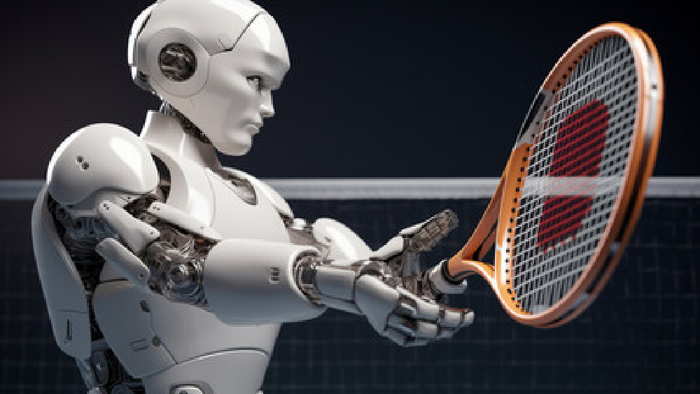Evaluating Robot Videos including our own 2023 Technical Demo Video

After the release of the 2023 BallBOPPer prototype and app, and after a number of manufacturers created new models imitating the capabilities of our 2023 prototype, the BallBOPPer has returned to "stealth mode" and will reemerge in 2026 with the Ultimate "True Game Play" preview and release. Get ready!
An article came out today in MIT Technology Review entitled "A skeptics guide to humanoid-robot videos".
Although we are building a purpose-built robot rather than a general purpose humanoid-robot, much of the info in this article still applies to the BallBOPPer.
As I said in the "Playing Tennis like Deep Blue Part 1", all current videos out there of robots playing tennis are CGI - meaning that they are computer generated graphics that replace one player on the court to look like a robot is playing tennis. There aren't any physical robots involved at all. These videos are, in essence, completely fake.
That being said, the MIT article has spurred us, in the interest of full disclosure, to reveal the following details concerning our own 2023 technical demo video.
The first concern the MIT article raises is whether the robot in a particular robot demo video is remote controlled or "tele-operated" rather than being truly autonomous.
The BallBOPPer (BB) in our 2023 technical demo is definitely NOT remotely operated. BB is completely autonomous throughout, and makes all its own decisions about the ball launching trajectories and court navigation routes.
The second issue raised by the MIT article is the number of "takes" used to record the robot performing each action.
Each of the sequences in our demo video does consist of more than one take.
The reason for this was that the ball loading system at that time was not performing fast enough. The design goal is to be able to launch balls in less than every three seconds for realistic play. The 2023 prototype system during the recording of the demo video was sometimes taking 5 to 9 seconds for a ball to load.
The ball loading system is one of the main improvements coming in the Production Prototype (yet to be revealed). We have completely rebuilt the ball loading system. We now queue at least three balls at all times so that there is always a new ball ready to launch, and the ball queuing system operates in the background to keep the ball slots filled with balls as long as balls are available in the ball bucket.
The third issue MIT raises that applies to the BallBOPPer video is whether any of the video was sped up.
There are two sections where the robot has to move forward on the court that are sped up. One that is fairly obvious, is at the end of the final pattern; BB moves forward from the baseline to the service line and has to perform a series of turns. These maneuvers were not performed at the designed speed due to a design flaw in the turret bearing.
The turret bearing enables the launcher to pan to the angle required to launch each specified shot. The turret bearing in the 2023 BallBOPPer prototype was not robust enough to handle both panning and steering at the same time. The centrifugal forces were too much for the bearing to handle. As a consequence, all movements had to be sequential, steer first, then pan, which in the end is too slow.
The Production Prototype has a completely new and more robust turret bearing and panning system, and we are now able to pan and steer simultaneously - effectively cutting many of the movement times in half.
Finally, the MIT article brings up the issue of "robot hands" which is not an issue with the BallBOPPer since it doesn't have any hands.


